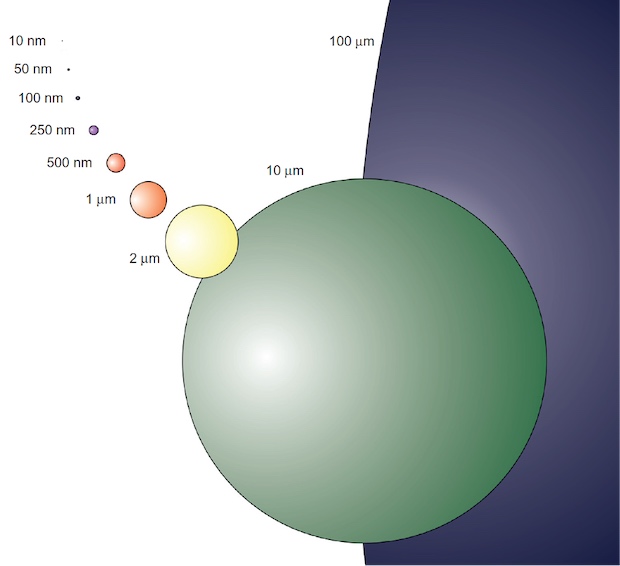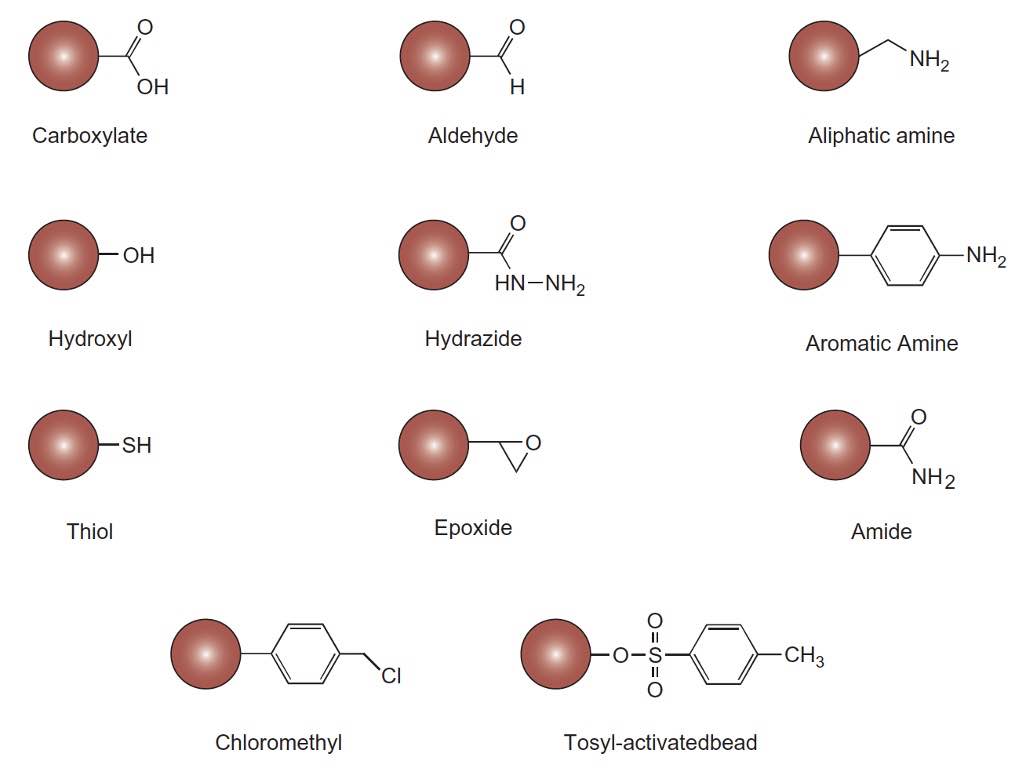When conjugating biomolecules to beads or particles, several general considerations should be taken into account, regarding particle characteristics, surface chemistry, and the conjugation process itself.
Particle Characteristics
- Size, surface composition, and density affect particle behavior in suspension, which influences handling and washing during conjugation.
- Particle size affects molar concentration. As particle size decreases, molar concentration increases for a given mass of particles, which also impacts the effective concentration of surface functional groups.
- Consider the particle's surface area to mass ratio, as this increases with decreasing diameter, leading to a higher available surface area for conjugation on nanoparticles compared to microparticles.
- Surface charge dramatically affects particle behavior in suspension and stability.
- Hydrophobic character is common in many polymer particles, necessitating modifications to add charge or hydrophilicity to limit nonspecific binding.
- Polymer type influences the particle's solvent compatibility, with crosslinked polymers generally more tolerant of organic solvents.
- Potential for non-specific binding can be reduced using hydrophilic coatings like PEG.

Figure. Comparison of particles size commonly used in biological applications
Surface Chemistry
- Chemical composition of the particle governs its suitability for a particular purpose, as does its shape. For example, comparison of protein adsorption onto pure polystyrene and several other copolymer particle types by Bale et al. (1989) resulted in the following order of binding affinity: polystyrene polystyrene*/PMMA copolymer > PMMA > polystyrene/* polyacrylic acid copolymer.
- Surface functional groups (e.g., carboxyl, amine, hydroxyl, epoxide) determine the available coupling reactions.
Density of functional groups impacts reactivity and the potential for nonspecific binding. - Surface modification through graft copolymerization, adsorptive coating, or covalent attachment can alter surface characteristics.
- Consider the reactive groups that are available for coupling or modification because activity and binding kinetics are highly dependent upon the orientation of the immobilized molecule.
Conversion of surface functional groups may be performed to broaden the attachment strategies for various ligands.
 Figure. Common functional groups or reactive groups on particles that provide the ability to couple proteins or other ligands.
Figure. Common functional groups or reactive groups on particles that provide the ability to couple proteins or other ligands.
Conjugation Process
- Solution characteristics (pH, salt concentration) must be optimized to maintain particle dispersion throughout the conjugation process.
- Washing procedures are needed to remove unreacted ligands or byproducts.
- Temperature, incubation time, and the order of reagent addition affect the efficiency and outcome of the immobilization.
- Blocking steps are used to minimize nonspecific binding.
- The potential for ligand polymerization during carbodiimide-mediated coupling should be considered, especially with proteins.
- Consider the biomolecule to particle ratio.
- Spacer selection for the ligands to reduce steric hindrance.
- Lyotropic salts can be added to increase the yields in some reactions.
By carefully considering these factors, researchers can optimize conjugation protocols to create stable and effective particle bioconjugates for their desired applications.
Interested in learning more about our particles with versatile functional groups for your conjugation? Visit Our Functional Polystyrene Particles to explore more.
Reference: Bioconjugate Techniques, 3rd Edition - July 25, 2013, Greg T. Hermanson
